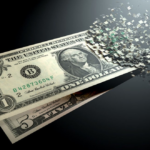
Mindlessness
The Growing Reality of Mindlessness In today’s fast-paced world, the disconnect between the mind and

The Growing Reality of Mindlessness In today’s fast-paced world, the disconnect between the mind and

Dryas, both a figure of mythology and a name tied to ecological cycles, encapsulates profound

“Bad money drives out all good”-Gresham’s law- For us it’s just another civilization down in

“The fact that many countries accept, as a principle, that the Dollar is as good